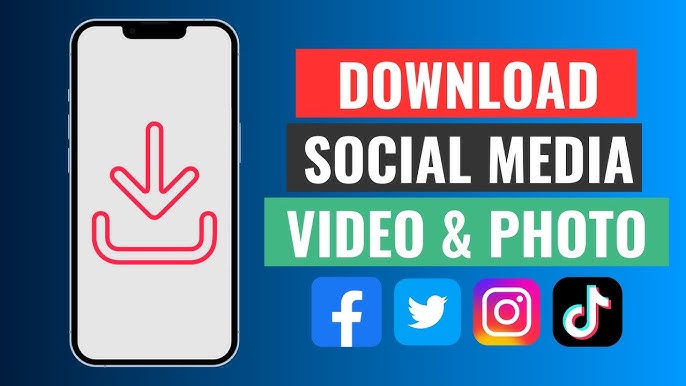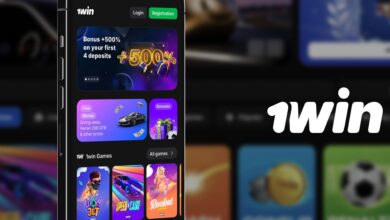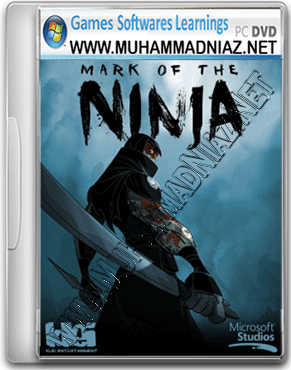Facebook Video Download Guide 2025 | Save Videos Offline Pakistan
How to Download and Save Videos from Social Media: A Complete Guide for Pakistan
In today’s digital age, we consume more video content than ever before—from educational tutorials and cooking recipes to memorable moments shared by friends and family. But what happens when you want to watch that inspiring TED talk during your commute without using mobile data, or save a tutorial for offline reference? This question becomes particularly pressing in Pakistan, where telecommunications infrastructure tells a story of contrasts: over 125 million mobile internet users navigate a landscape where high-speed connectivity in metropolitan centers coexists with frustratingly inconsistent coverage in smaller towns and rural regions. The ability to download videos isn’t merely about convenience—it represents a practical solution to real connectivity challenges that Pakistani users face daily. For instance, if you need a Facebook video download tool that’s straightforward and efficient, platforms like SaveFrom.net offer user-friendly options that work across multiple devices. Understanding how to safely and effectively download online videos empowers you to take control of your digital content consumption, transforming the ephemeral nature of streaming into something tangible and accessible, regardless of network conditions or data package limitations.

Why People Download Videos Online
The motivations behind downloading videos from social media and streaming platforms extend far beyond simple preference—they reflect genuine needs shaped by Pakistan’s unique digital ecosystem and socioeconomic realities.
Primary Reasons Pakistani Users Download Videos
| Reason | Relevance in Pakistan | Typical Use Cases |
|---|---|---|
| Data Conservation | Critical consideration—monthly data costs can consume a significant portion of discretionary income for many households | Downloading educational content via university Wi-Fi, grabbing entertainment during cafe visits, bulk-saving tutorial series at home |
| Connectivity Reliability | Persistent challenge—network fluctuations during peak hours, complete outages during severe weather, infrastructure gaps in emerging neighborhoods | Pre-loading a week’s worth of content, ensuring children’s educational videos remain accessible, downloading before traveling outside major cities |
| Educational Access | Transformative impact—democratizes quality instruction beyond expensive tutoring centers | Competitive exam preparation (MDCAT/ECAT materials from top educators), university lecture reviews, skill development courses that would otherwise be inaccessible |
| Entertainment | Cultural phenomenon—Pakistan’s vibrant digital content scene produces thousands of videos daily | Preserving favorite comedy sketches before they’re deleted, collecting Coke Studio performances, archiving cricket moments that spark national pride |
| Professional Development | Economic necessity—freelancers and remote workers building careers in global marketplace | Downloading comprehensive courses on Photoshop techniques, saving client presentation templates, archiving webinar recordings for team training |
Educational Purposes: Consider a student in Multan preparing for the MDCAT exam. She discovers an exceptional lecture series from a Lahore-based educator who explains organic chemistry concepts with unusual clarity. Rather than streaming each 45-minute lecture multiple times—burning through her mobile data package and praying her connection doesn’t fail during crucial explanations—she downloads the entire series during her weekly visit to a cousin’s house with fiber internet. Those saved videos become her constant companions during late-night study sessions, immune to network failures and accessible even when load shedding knocks out the local cell tower. This scenario plays out millions of times across Pakistan, where downloaded educational content often makes the difference between adequate and excellent exam preparation.
Offline Entertainment: Cricket occupies a sacred space in Pakistani culture. When Babar Azam plays an extraordinary innings or Shaheen Afridi takes a spectacular wicket, those moments get shared, discussed, and rewatched endlessly. Fans download match highlights not just for personal enjoyment but to share during tea breaks at work, to show elderly relatives who missed the live broadcast, or to settle friendly debates about exactly how that controversial LBW decision unfolded. Similarly, Pakistan’s drama serials—which command viewership that would make Western producers envious—get downloaded by overseas Pakistanis maintaining cultural connections, by shift workers whose schedules conflict with broadcast times, and by families who prefer commercial-free viewing during dinner gatherings.
Professional Applications: Pakistan’s freelance community contributes substantially to the country’s digital economy, with tens of thousands of graphic designers, web developers, content writers, and digital marketers serving international clients. These professionals inhabit a perpetual learning mode, constantly upgrading skills to remain competitive. A Karachi-based freelancer might download an advanced After Effects tutorial series to master motion graphics, watching segments during commute time on the bus, rewinding complex sections without worrying about data consumption, and building a personal library of reference materials that transforms spotty internet from obstacle to mere inconvenience.
Content Preservation: Social media’s transient nature creates anxiety about losing meaningful content. Wedding videos from a cousin’s mehndi celebration, a grandfather’s storytelling captured spontaneously on someone’s phone and shared via WhatsApp, a particularly moving Ramadan lecture that resonated deeply—these digital artifacts matter profoundly to people. Downloading ensures these moments survive platform changes, account deletions, or the simple reality that people sometimes remove content they later wish they’d kept. Family archivists emerge organically in many Pakistani households, maintaining collections of downloaded videos that document family history in ways previous generations never could.
Creative Inspiration: Pakistan’s burgeoning content creation industry has spawned thousands of influencers, videographers, and digital marketers who study successful content with the intensity of film students analyzing classic cinema. They download videos to examine editing techniques frame-by-frame, to understand pacing and narrative structure, to build “swipe files” of compelling openings and effective calls-to-action. Fashion designers in Lahore’s bustling markets save runway videos and styling tutorials; food bloggers in Islamabad collect recipe demonstrations and plating techniques; travel content creators exploring Hunza’s apricot blossoms or Mohenjo-daro’s ancient ruins download reference footage to understand what makes travel content compelling.
How Online Video Downloading Works: Technical but Simple
The technology enabling video downloads operates through several interconnected processes that, while technically sophisticated, become straightforward when understood properly.
The Download Process: Step by Step
- URL Identification: Every video hosted on social media platforms possesses a unique identifier—essentially a digital address pointing to where the platform’s servers store that specific file, typically encoded within the video’s web address.
- Request Processing: Download tools function as intermediaries, sending properly formatted requests to platform servers asking for access to the video file, similar to how your browser requests webpage information but specifically targeting the video data.
- Format Detection: The tool examines what the platform offers—videos typically exist in multiple resolutions and formats simultaneously, allowing the tool to present you with options matching your device capabilities and storage constraints.
- File Retrieval: The complete video transfers from the platform’s server infrastructure to your device through your internet connection, arriving as a discrete file rather than the continuous stream used during normal viewing.
- Optional Conversion: When necessary, the tool re-encodes the video into formats your specific device handles most efficiently, though modern tools increasingly minimize conversion to preserve quality and reduce processing time.
- Local Storage: The final video file lands in your device’s storage system—phone gallery, computer downloads folder, or external SD card—becoming a permanent resident until you decide otherwise.
Streaming vs. Local Storage: Streaming represents a fundamentally different approach to video consumption than downloading. When streaming, video data flows to your device in small chunks, played immediately and typically discarded to conserve storage space. This explains why buffering occurs—your device exhausted its small buffer of pre-loaded chunks and must wait for more data to arrive over your internet connection. Pakistan’s network infrastructure makes this buffering frustratingly common: a household in Faisalabad might experience smooth streaming at 2 AM when network traffic is minimal but face constant buffering at 8 PM when half the neighborhood is online. Downloading eliminates this entirely—the complete video file resides on your device, playable instantly regardless of current network conditions. For Pakistani users navigating unpredictable connectivity, this distinction transforms from technical detail to practical necessity.
Video Formats Explained: Videos exist in various container formats that package video streams, audio streams, and metadata into single files. According to Wikipedia’s article on video formats, MP4 has achieved near-universal dominance due to excellent compression efficiency and device compatibility. AVI, developed decades ago, persists mainly in older video archives. MOV, Apple’s preferred format, appears frequently in content created on iPhones and Macs. WebM, designed specifically for web streaming, offers good compression but less universal device support. For Pakistani users—where device diversity spans from budget Chinese phones to flagship Samsung and Apple devices—MP4’s universal compatibility makes it the sensible default choice. Files in other formats will often play but may encounter compatibility issues on older or less powerful devices.
Codecs and Compression: Behind the scenes, codecs perform the computational magic that makes modern video practical. Raw, uncompressed video consumes enormous storage—a single minute of 1080p video would require roughly 3GB if stored uncompressed. H.264 (also called AVC) compresses this dramatically while maintaining impressive quality, typically reducing file sizes by 95-99%. The newer H.265 (HEVC) achieves even better compression, producing similar quality at roughly half the file size of H.264, though requiring more powerful processors for encoding and playback. This matters for Pakistani users with budget devices—while H.265 offers better efficiency, older phones may struggle with playback, making H.264/MP4 combinations the safer choice for maximum compatibility.
Internet Speed Considerations in Pakistan
| City/Region | Typical Mobile Speed | Download Time (100MB video) | Practical Recommendations |
|---|---|---|---|
| Karachi | 15-25 Mbps | 30-50 seconds | Downloading on mobile data remains feasible for moderate-sized files; consider quality vs. size tradeoffs |
| Lahore | 12-20 Mbps | 40-65 seconds | Reasonable mobile data usage for important content; Wi-Fi still preferable for larger collections |
| Islamabad | 18-28 Mbps | 28-45 seconds | Generally good speeds support opportunistic downloading; network congestion varies by neighborhood |
| Rural Punjab/Sindh | 3-8 Mbps | 2-4 minutes | Wi-Fi essential for anything beyond short clips; plan downloads before leaving areas with better connectivity |
| Northern Areas | Highly variable (2-15 Mbps) | 50 seconds – 5 minutes | Download comprehensive content libraries before departing major cities; connectivity in valleys and mountains remains unpredictable |
Advantages of Using Reliable Tools
The video downloading tool landscape contains everything from professional services to questionable websites that present serious security risks. Distinguishing between these categories becomes particularly crucial in Pakistan’s digital environment, where cybersecurity awareness continues developing and many users lack technical backgrounds to identify threats.
Key Benefits for Pakistani Users
- Genuine Simplicity: Effective downloading tools recognize that users span enormous technical literacy ranges—from Karachi’s tech-savvy startup employees to rural shopkeepers first encountering smartphones. The best services strip away complexity, presenting interfaces where pasting a URL and tapping download represents the entire process, no technical knowledge required.
- Language Accessibility: While English proficiency is growing, many Pakistani users feel more comfortable with Urdu interfaces. Some downloading services recognize this, offering Urdu language options that make the entire experience more intuitive and less intimidating for users whose English reading skills are limited.
- Processing Efficiency: Time possesses value, and unreliable internet connections make it scarce. Quality downloading services process requests swiftly, utilizing properly optimized servers and efficient algorithms that respect both your time and your data package. Services that artificially throttle speeds or impose arbitrary waiting periods essentially waste resources that matter to users managing limited data allowances.
- Economic Impact: For many Pakistani families, mobile data represents a significant monthly expense that must be carefully managed. The ability to download once on Wi-Fi and watch repeatedly offline can literally save thousands of rupees annually. A student who downloads educational content at her university instead of streaming it repeatedly on mobile data might save enough over a semester to purchase textbooks. These aren’t trivial savings—they represent meaningful economic differences for households operating on tight budgets.
- Format Versatility: Pakistan’s smartphone market showcases remarkable device diversity, from budget phones costing under 15,000 rupees to flagship devices exceeding 200,000 rupees. Professional downloading services accommodate this by offering multiple format and quality options, allowing users to select what their specific device handles optimally rather than forcing a one-size-fits-all approach that may perform poorly on lower-end hardware.
- Cross-Platform Functionality: Pakistan’s internet users primarily access online content through smartphones, but many also use computers at universities, offices, or internet cafes. Tools that work consistently across platforms—seamlessly handling requests whether initiated from an Android phone, an iPhone, a Windows laptop, or a shared computer at a cybercafe—provide flexibility matching actual usage patterns.
- Storage Flexibility: Many budget and mid-range phones sold in Pakistan offer modest internal storage supplemented by SD card slots. Quality downloading tools recognize this, allowing direct saves to external SD cards rather than forcing everything to limited internal storage. This technical detail makes downloading practical for users whose phones might otherwise lack sufficient space for meaningful video libraries.
- Security Consciousness: Reputable downloading platforms implement proper security measures—encrypted connections, no malware bundling, transparent privacy policies, minimal data collection. This contrasts sharply with sketchy websites that install unwanted software, redirect through advertising networks designed to generate revenue through deceptive practices, or worse, actually infect devices with malware. For users without strong technical backgrounds to identify these threats, sticking with established, reputable services provides crucial protection.
- Power Outage Resilience: Load shedding remains a reality across much of Pakistan, with scheduled and unscheduled power outages disrupting internet infrastructure. Content downloaded to your device remains accessible regardless of whether the power grid is functioning—entertainment and educational materials stay available during outages that might otherwise leave you without options.
- Consistent Functionality: Social media platforms constantly evolve their technologies and policies, sometimes breaking downloading tools that haven’t been maintained. Professional services employ development teams that monitor these changes and update their systems accordingly, ensuring the service keeps working reliably rather than suddenly failing when platforms implement technical changes.
Practical Examples of Everyday Use in Pakistan
Real-world applications illuminate why video downloading has evolved from convenience to necessity across Pakistani society’s various segments and contexts.
Education Sector Applications
- Competitive Exam Preparation: Medical and engineering entrance exams in Pakistan are brutally competitive, with acceptance rates at top institutions hovering in single digits. Students preparing for MDCAT or ECAT often rely on lecture series from renowned educators who explain complex concepts more effectively than available textbooks. A student in Sahiwal downloads a complete organic chemistry series from a Lahore educator whose teaching style finally makes reaction mechanisms comprehensible. Those videos get watched repeatedly—initial viewing for concept understanding, second viewing while taking notes, third viewing before practice problems, final review before the exam. This intensive engagement would be prohibitively expensive and impractical through streaming.
- University Content Access: Pakistani universities increasingly record lectures, particularly for large enrollment courses. Students download these recordings to review difficult material, to compensate for classes missed due to illness or family obligations, or simply to hear explanations again when preparing for exams. At institutions like LUMS, NUST, or IBA, where academic rigor demands thorough understanding, having downloadable lecture access often separates struggling students from successful ones.
- Skill Development: Young Pakistanis increasingly pursue digital economy careers—graphic design, video editing, programming, digital marketing. YouTube and similar platforms host world-class instruction in these fields, often superior to what local institutions offer. A Peshawar teenager aspiring to become a motion graphics designer downloads After Effects tutorials, building skills that might eventually land freelance clients paying in dollars. These downloads represent more than entertainment—they’re career development tools that might transform economic circumstances.
- Religious Education: Islamic education holds profound importance for many Pakistani families. Throughout the year, and particularly during Ramadan, users download Quranic recitations from preferred reciters, lectures from respected scholars explaining Islamic jurisprudence, and educational content about Islamic history. These downloads serve both personal spiritual development and family religious instruction, with parents often curating collections of age-appropriate Islamic content for children.
Professional and Business Use
- Freelancer Skill Enhancement: Pakistan’s freelance workforce generates billions in annual exports, with individual professionals constantly upgrading skills to remain competitive in global marketplaces. A freelancer specializing in logo design might download tutorial series on advanced Illustrator techniques, psychological principles of color theory, or case studies of successful branding campaigns. These resources get consumed during downtime—watched on commute buses, reviewed during lunch breaks, studied late at night when house chores are complete and focused learning becomes possible.
- Small Business Marketing: Entrepreneurs running small businesses—from boutique clothing stores in Karachi’s Tariq Road to street food vendors in Lahore’s Anarkali Bazaar—increasingly recognize social media marketing’s importance. They download videos explaining Instagram marketing strategies, examples of effective product photography, tutorials on creating engaging reels. This self-directed marketing education helps businesses compete without hiring expensive marketing agencies.
- Remote Team Training: Companies with distributed teams across Pakistani cities use video for training and communication. Branch managers download company training videos, product demonstration materials, and recorded meetings to share with local staff, ensuring consistent information delivery regardless of internet quality at different locations.
Entertainment and Culture
| Content Type | Representative Examples | Download Motivations |
|---|---|---|
| Cricket Content | PSL highlights, national team matches, player documentaries, historical innings compilations | Rewatching spectacular moments, sharing with friends during gatherings, settling debates about specific plays, maintaining personal archives of favorite players’ careers |
| Drama Serials | Productions from HUM TV, ARY Digital, Geo Entertainment spanning romance, family sagas, historical dramas | Watching commercial-free at convenient times, sharing with overseas relatives, catching up on missed episodes, rewatching favorite scenes |
| Music Productions | Coke Studio performances, Nescafé Basement sessions, Ufone advertisements with catchy music, independent artist releases | Building personal music libraries, offline listening during commutes, sharing with friends, preserving performances that might be removed |
| Comedy Content | Sketches from Karachi Vynz, Bekaar Films productions, Danish Ali’s social commentary, standup comedy specials | Entertainment during travel, sharing in family WhatsApp groups, rewatching favorite sketches, showing friends new discoveries |
| Cooking Demonstrations | Traditional Pakistani recipes (biryani, nihari, haleem), BBQ techniques, fusion cuisine experiments, dessert tutorials | Kitchen reference while cooking, learning new techniques, planning special occasion menus, sharing with family members who cook |
| Travel Content | Northern areas documentation (Hunza, Skardu, Fairy Meadows), historical site tours, travel vlogs, destination guides | Planning trips, virtual tourism when travel isn’t feasible, showing family before vacations, understanding destinations before visiting |
Wedding and Family Events: Pakistani weddings represent elaborate, multi-day celebrations where professional videography has become standard. Families receive highlight videos that get shared through WhatsApp and social media. These videos then get downloaded by extended family members, creating personal archives of nieces’ weddings, cousins’ mehndi celebrations, or siblings’ walima receptions. For overseas Pakistanis missing family celebrations due to distance or visa complications, these downloaded videos provide crucial connections to family milestones happening thousands of miles away.
Fitness and Health: Gym memberships remain financially impractical for many Pakistanis, yet health consciousness is growing rapidly. Home fitness has exploded in popularity, with users downloading workout videos, yoga sessions, and exercise challenges. A Lahore housewife might download a 30-day fitness challenge video series, following along in her living room after morning household responsibilities conclude. A young professional in Islamabad downloads HIIT workout videos for early morning exercise before heading to work, avoiding gym costs and time constraints.
Travel Preparation: Pakistan’s northern regions—Gilgit-Baltistan, Azad Kashmir, Khyber Pakhtunkhwa—offer spectacular natural beauty that draws increasing domestic tourism. Before embarking on trips to destinations like Hunza’s apricot blossoms, Naran’s alpine lakes, or Skardu’s desert mountains, travelers download comprehensive guide videos covering route conditions, accommodation options, safety considerations, and attraction recommendations. This preparation becomes particularly valuable when visiting remote areas where internet connectivity becomes sparse or nonexistent.
Culinary Exploration: Pakistani cuisine encompasses extraordinary regional diversity—Karachi’s seafood, Lahore’s street food, Peshawar’s meat dishes, Balochi sajji, Sindhi biryani variations. Food enthusiasts download recipe videos to learn dishes from regions they haven’t visited, to master techniques for special occasion cooking, or simply to expand their culinary repertoires. Having these videos saved means reference while cooking, when touching phones with messy hands is impractical and internet connectivity while actively cooking may be interrupted.
Conclusion
Video downloading has evolved from technical curiosity to practical necessity across Pakistan’s diverse digital landscape. The ability to capture streaming content and preserve it locally addresses real challenges that Pakistanis face daily—inconsistent connectivity that makes streaming frustrating, data costs that make repeated streaming economically impractical, and infrastructure limitations that make offline access genuinely valuable rather than merely convenient.
Consider the medical student in Quetta preparing for MDCAT exams, downloading lecture series that transform from ephemeral streams into permanent study resources she can review dozens of times without worrying about buffering or data consumption. Or the freelance graphic designer in Sialkot building skills through tutorial videos downloaded at a cousin’s house, later watched during power outages when internet infrastructure fails but creative work must continue. Or the family in Multan preserving a grandson’s wedding celebration, downloading videos that might otherwise disappear from social media but now reside safely in family archives for future generations.
These scenarios illustrate why video downloading matters—it democratizes access to educational resources that might otherwise remain inaccessible to students outside major cities with reliable connectivity. It enables professional development for the freelance workforce contributing billions to Pakistan’s digital economy. It preserves cultural memories and family histories in ways previous generations never could. It makes entertainment accessible during commutes, travels, and the inevitable periods when load shedding disconnects digital infrastructure.
The technology enabling these capabilities operates reliably when users employ reputable services, exercise basic security precautions, and understand fundamental principles around formats, quality settings, and storage management. Pakistani users navigating this landscape benefit from recognizing their specific context—device diversity spanning budget phones to flagship models, network conditions ranging from excellent metropolitan coverage to challenging rural connectivity, economic realities that make data costs meaningful budget considerations, and cultural values that shape appropriate content choices.
By choosing established downloading services that prioritize security over questionable monetization schemes, by managing storage thoughtfully rather than accumulating digital clutter, by respecting copyright boundaries while enjoying fair use privileges for personal and educational purposes, and by optimizing data usage through Wi-Fi prioritization and strategic quality selection, Pakistani users can harness video downloading’s benefits while avoiding common pitfalls.
The digital landscape will continue evolving—platforms will implement new technologies, downloading tools will adapt accordingly, internet infrastructure will gradually improve, and new usage patterns will emerge. Yet the fundamental value proposition remains constant: the ability to transform streaming content into permanent, offline-accessible resources that serve educational, professional, cultural, and entertainment needs regardless of current network conditions or data package limitations.
This capability empowers users to take genuine control over their digital content consumption, adapting technology to serve their specific needs rather than accepting the limitations streaming platforms impose. For Pakistan’s internet users—whether students pursuing academic excellence, professionals developing marketable skills, families preserving precious memories, or individuals seeking entertainment and cultural enrichment—understanding and effectively using video downloading tools represents practical digital literacy that delivers meaningful daily value.








